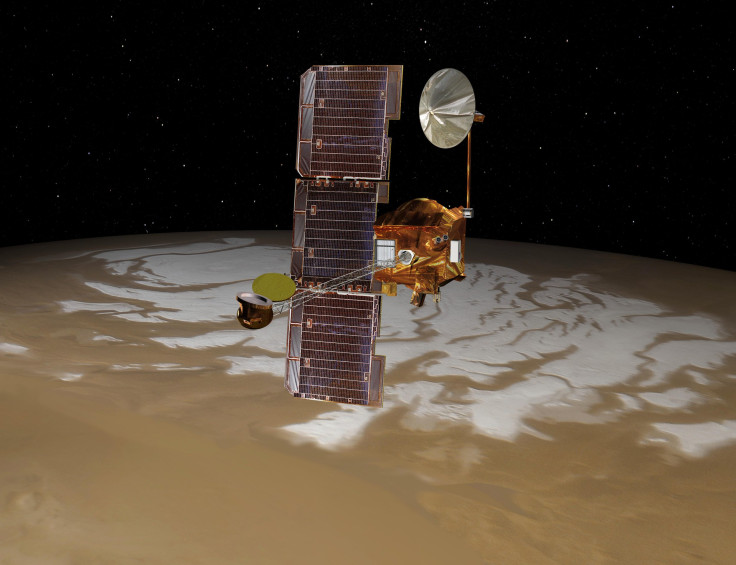NASA's Mars Odyssey Spacecraft Nears 'Orbital Milestone' Of 60,000 Laps

On Tuesday, NASA’s “2001 Mars Odyssey” spacecraft, which is currently orbiting the red planet at an altitude of about 2,400 miles, will complete its 60,000th orbit -- a record worthy of a spacecraft named after the science fiction masterpiece, “2001: A Space Odyssey,” written by Arthur C. Clarke.
The Odyssey spacecraft, which already holds the record of being the longest-surviving continually active spacecraft in orbit around a planet other than Earth, was launched on April 7, 2001. It has been orbiting Mars since Oct. 23, 2001, and has made a number of key discoveries, including the detection of widespread water ice just beneath the surface of the red planet. The presence of shallow, subsurface water ice was later confirmed by instruments aboard the Phoenix lander.

“This orbital milestone is an opportunity to celebrate Odyssey's many achievements,” Jim Green, NASA’s director of Planetary Science, said, in a statement released last week. “Odyssey will continue to help lay a foundation for the first humans to Mars in the 2030s through NASA's Journey to Mars initiative.”
Observations made by the spacecraft have also helped scientists prepare a high-resolution global map of Mars and study seasonal and year-to-year changes, such as freezing and thawing of carbon dioxide. The spacecraft also acts as a relay for communications between the various rovers and landers on Mars, and Earth. And, despite its age, Odyssey shows no signs of stopping anytime soon.

“Upcoming observations will focus on what is happening in the Martian atmosphere in the morning, such as clouds, hazes and fogs, and on frosts on the surface that burn off by later in the day,” Jeffrey Plaut, Odyssey project scientist at NASA’s Jet Propulsion Laboratory, said in the statement.
Future plans for Odyssey also include using it as a communications relay for NASA and European Space Agency’s landers arriving on Mars in 2016 -- paving the way for future manned missions to the red planet.
© Copyright IBTimes 2025. All rights reserved.






















